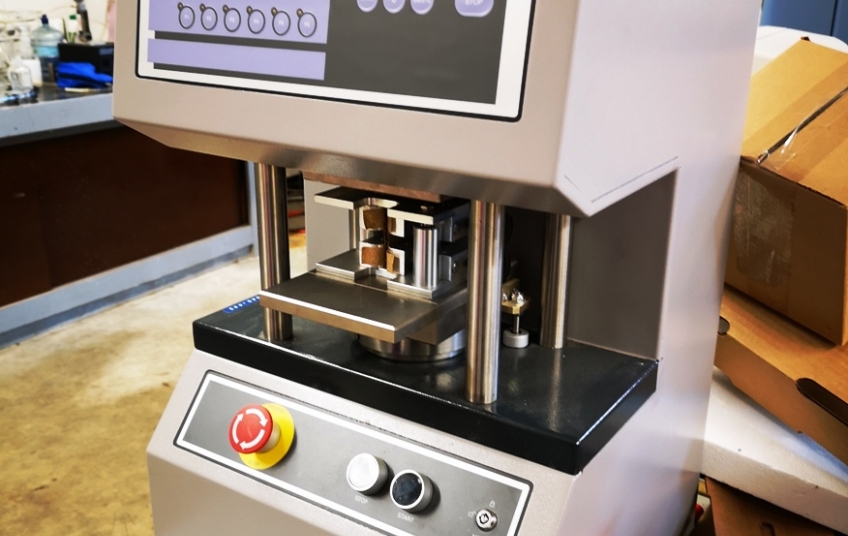Paper is a big part of the packaging world. When testing various things on paper, one usually tests it on the machine direction or cross direction of the paper. The machine direction or grain direction is the direction in which the paper fibers align themselves during production. The cross direction is the direction perpendicular to the machine direction. Some of the differences one may find are found through comparing the tensile strength, elongation, tear strength, and fiber orientation. Tests fall under the categories of non-destructive tests and destructive tests. These tests are needed so we know how to grade the paper.

Paper Grades
There are many different paper grades out there that all have their own uses and properties. One type is tag paper which is tough and durable. It is used as price tags found on consumer goods. Another type is text paper, which is just the normal paper most people use in their daily lives. A third grade is bond paper, which is durable and used in electronic printing for things such as letterheads, envelops, invoices, or for most documents printed by printers. Bristol paper is a heavyweight, thick uncoated paper. Due to its strength, it is commonly used in book covers, tickets, brochures, and file folders. There are many other types of paper grades besides the ones listed above.
Tensile Strength Test

The tensile strength test is one of the most important tests used on paper. The test is used to find out how resistant the paper is to a web break. The test can be performed in both machine direction and cross direction. A few factors the test performer should be aware of are the strength, length, and bonding of fibers. To perform the test, one cuts two test specimens of 250 mm by 15 mm, one parallel to and the other perpendicular to the same edge of the specimen. The specimen is then put into the paper tensile strength testing machine where the test is completed and the results are given.
Tensile Stiffness Test

There are a few different ways the tensile stiffness in paper can be determined. Taber stiffness is used to help find the 2-point bending stiffness of paper and paperboard. Clarke stiffness measures the stiffness as the free length in centimeters of a paper strip, bending under its own weight. Resonance stiffness is done through sending ultrasound in two directions down a specimen, one parallel to and the other perpendicular to the same edge of the specimen. This test can be done both in the machine direction or the cross direction. The specimen with the highest speed of ultrasound is the one in the machine direction.
Tear Test

The main tear test that is performed on paper is the Elmendorf tear test. Elmendorf tear testing helps determine the force required to continue tearing an initial cut in a sheet of paper or other material.
Steps to prepare Elmendorf tear testing samples:
1. Make corresponding samples according to test standards.
2. Adjusting pressure gauge: Check whether the pressure gauge value is in the range of 0.6 ±1 MPa, otherwise, adjust the pressure relief valve to meet the requirements. Start the Elmendorf tearing tester, enter the working interface and set the corresponding parameters.
3. Zero adjustments and calibration: Adjust the Elmendorf tearing tester calibration according to the test manual, and adjust the angle, then return to the main page to start testing.
4. Sample test: Select suitable hammer to test all samples and save Elmendorf tear test results. This procedure was found on testextextile.com.
Bursting Test

A burst test is used to determine the maximum pressure strength of paper, solid board, and corrugated board. It is determined through using a digital hydraulic paper tester or digital hydraulic board burst tester. This test is very important in figuring out the quality of the paper. It shows how much stress a specimen can handle through applying an external pressure. To figure out the machine direction through this test one looks at the perpendicular fractures at either end, which will indicate the cross direction.
References
https://paperlinx.co.uk/what-are-the-different-types-of-paper/
file:///C:/Users/19018/AppData/Local/Packages/Microsoft.MicrosoftEdge_8wekyb3d8bbwe/TempState/Downloads/paper_and_board__identification_of_machine_and_cross_direction_p2009-93%20(1).pdf
file:///C:/Users/19018/OneDrive/Pictures/DefVol1No28MD_CD.pdf
http://www.pulppapermill.com/tensile-strength-of-paper/
https://www.smithers.com/industries/packaging/manufacturers-and-users/packaging-materials-testing/paper-testing-physical-properties/stiffness
https://www.testingmachines.com/product/83-76-elmendorf-tear-tester
https://www.testextextile.com/product/elmendorf-tear-tester-tf140c/


































